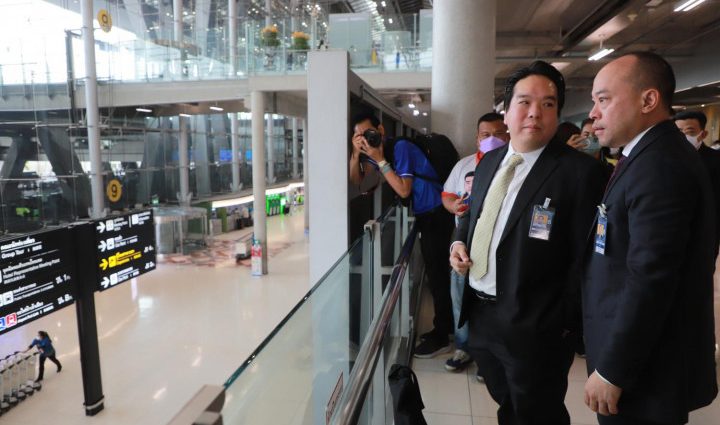Airport changes to tackle more arrivals

Suvarnabhumi International Airport has announced new measures to handle the rise of incoming passengers as the number of arrivals at Bangkok’s main international gateway jumped following China’s decision to reopen its borders.
The Airport of Thailand (AoT) revealed on Friday that Suvarnabhumi airport has come up with many measures to tackle the delays in passenger servicing time, which have already begun improving service flow, especially during peak hours, it claimed.
According to Suvarnabhumi airport director Kittipong Kittikachorn, the airport received complaints about luggage claim delays from approximately 30 flights per day last month.
This statistic is considered an improvement compared to the number in December when approximately 50 flights per day were being complained about.
The airport has received fewer complaints about baggage delays this month, seeing reports of delays in just 7% of its daily flights, which is about 15-20 flights per day.
On Feb 8, Transport Minister Saksayam Chidchob ordered the Immigration Bureau to increase its incoming passenger handling capacity at Suvarnabhumi to ensure arriving passengers would not have to deal with long, snaking queues at immigration counters or lengthy delays when going to claim their baggage.
With Mr Saksayam’s order, the AoT has come up with a raft of measures to reduce the delays and ease passenger congestion, dividing these into measures for short-term and long-term problem-solving.
For short-term problem-solving, the airport’s ground handling operators, THAI Ground (TG) and Bangkok Flight Services (BFS), are recruiting staff and procuring more equipment to deal with the spike in passenger numbers.
The plan AoT has come up with also included a temporarily expanded period for carriers to provide self-handling services and the installation of more automatic passport checkpoints and pre-immigration kiosks, as well as increasing the new priority zone and VOA checking area at the Satellite 1 building, which is set to open in September.
The AoT plans to install auto passport checkpoint channels in November to accommodate outbound passengers using e-passports, which can help reduce the congestion at passport checking areas.
For sustainable, long-term problem-solving, the AoT is now looking for a third ground-handling operator to help resolve nagging issues.
Once the recruiting process is complete, the AoT will submit the contract to the cabinet for its approval.
The AoT also came up with a solution to the shortage of taxi services at the airport by registering 3,909 taxis for service there. The number of taxis will soon increase to 4,500, said Mr Kittipong.
Meanwhile, the airport authorities also plan to fill the void between the airport’s passenger terminal and Concourse D building by developing it into a reception hall for inbound passengers and those with visas on arrival (VOAs). They expect to provide the service for 2,000 inbound passengers and 400 people with VOAs every hour.
The second phase of the airport’s long-term solution to congestion problems is now being written, and construction is set to begin in November, according to the AoT.
The Tourism Authority of Thailand expects to welcome 25 million international tourists this year, generating 1.5 trillion baht from this revenue stream. According to Mr Kittipong, the number has increased after the reopening of China’s land borders on Jan 8 and the resumption of outbound group tours from China on Feb 6.

